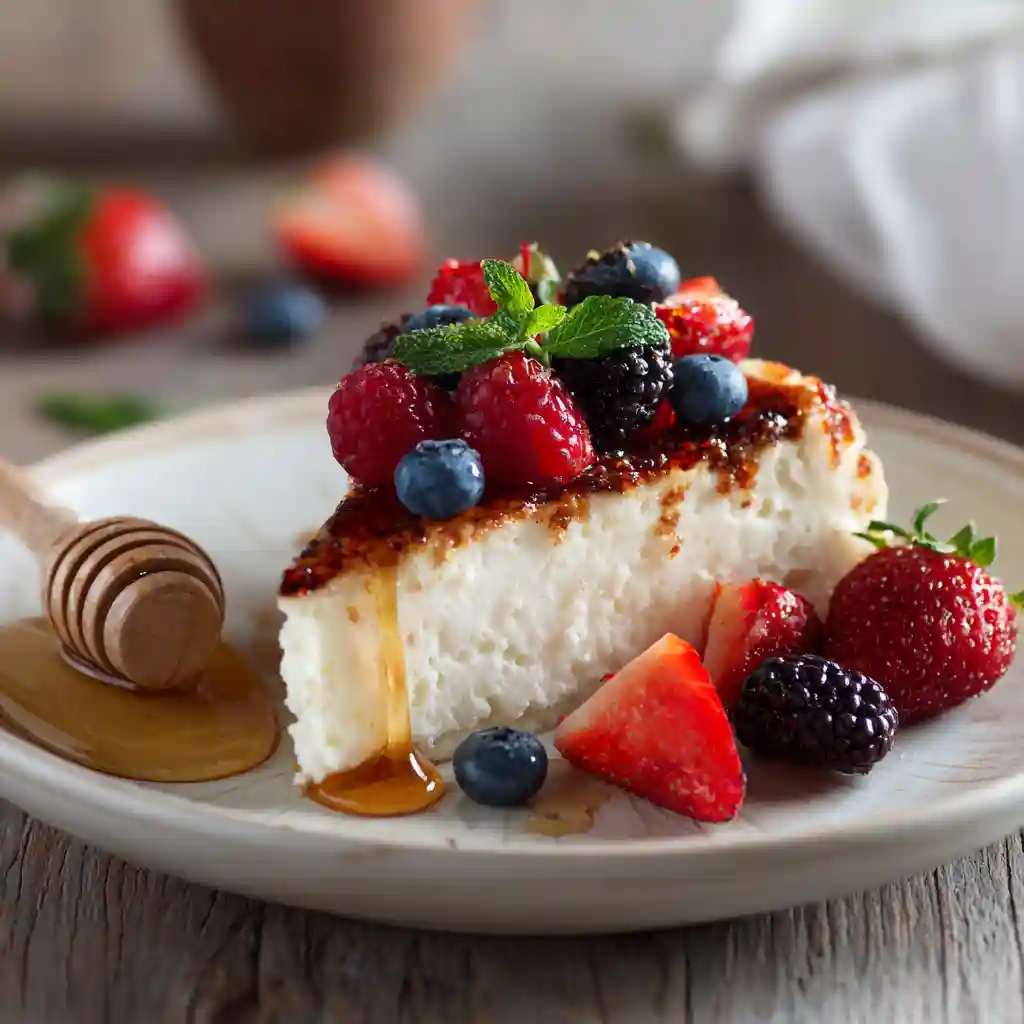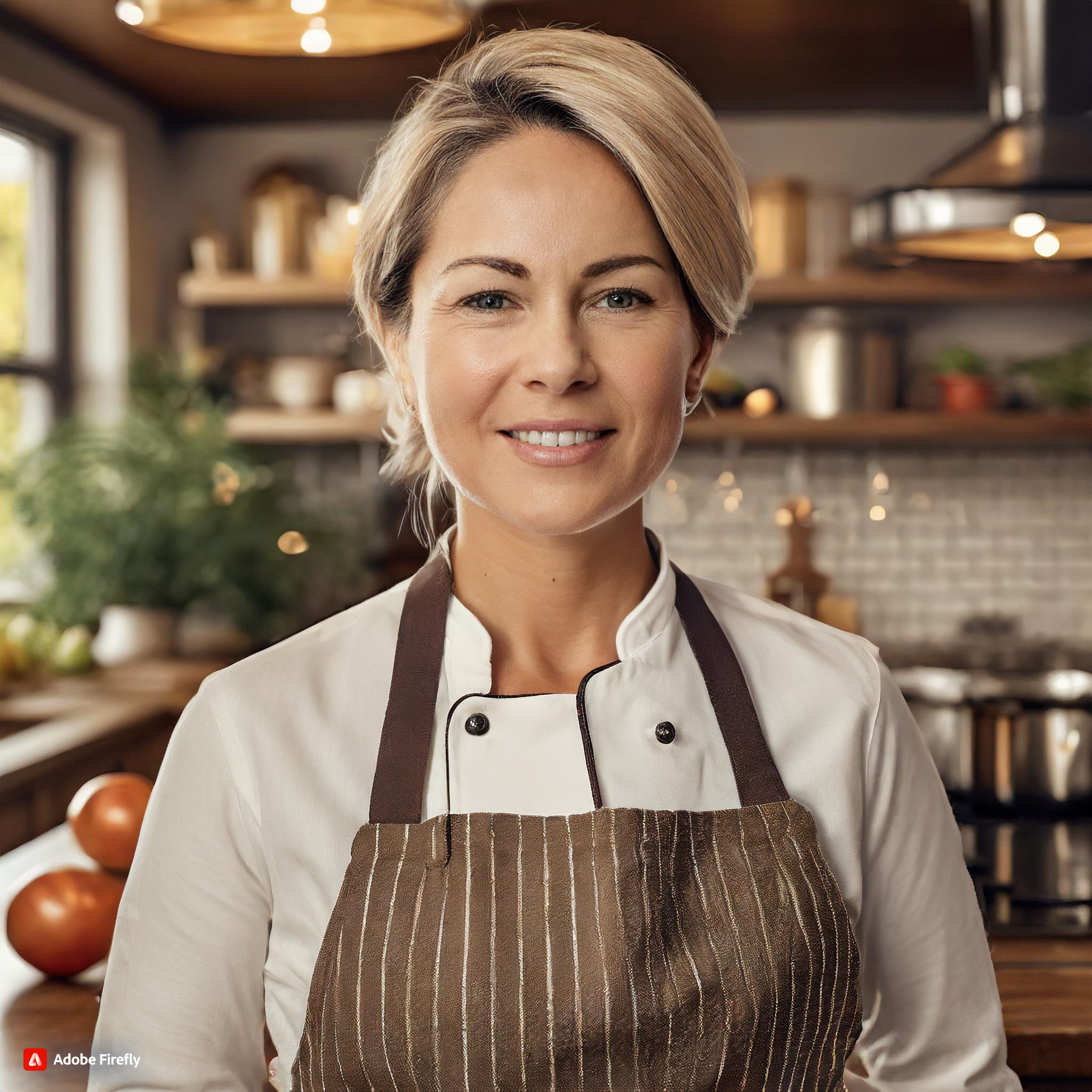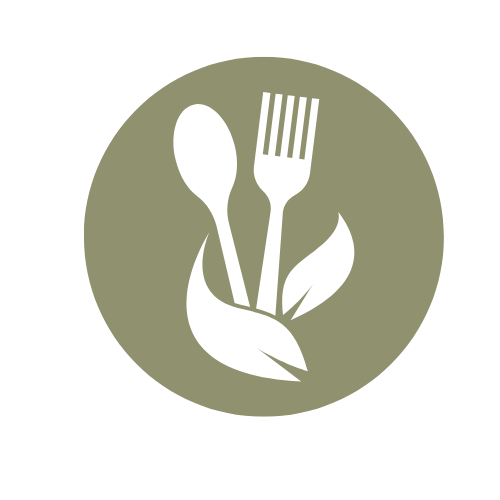If you’ve ever wished cheesecake could be just a little lighter but still creamy and rich you’re going to love this cottage cheese cake. This article will walk you through the magic of baking with cottage cheese: how it affects texture, flavor, and why it’s showing up in more recipes today. We’ll start with a story close to my heart, then dive into the science, the step-by-step, and the sweet joy of serving it up. Whether you’re cutting back on cream cheese or just curious, this cake might surprise you.
Table of Contents
Why Cottage Cheese Cake Is a Must-Try Dessert
From Grandma’s Kitchen to a Lighter Cheesecake
Hi, I’m Laura, and my love of cooking began beside my grandma, standing on a stool, learning how food brings people together. Back then, cheesecake was a family favorite, but it was always dense, heavy, and packed with cream cheese. Years later, I started playing around with ingredients, and that’s when I discovered what cottage cheese could do. I was skeptical at first wouldn’t it be lumpy? But after blending it into a batter, something clicked. The result was a cottage cheese cake that was creamy, light, and every bit as comforting. It felt like honoring my roots while making the recipe my own.
This version of cottage cheese cake came together during one of my weekend cooking classes. We were exploring high-protein desserts when a guest mentioned swapping cream cheese for something leaner. That small idea sparked this recipe, which quickly became a favorite in our home and on the blog. I’d already been experimenting with dishes like my Ground Beef Cottage Cheese Bowl, so this felt like the next logical step.
Why Cottage Cheese Deserves a Spot in Your Dessert Game
Cottage cheese isn’t just for savory bowls or salads. It’s rich in protein, lower in fat, and has a mild taste that blends beautifully into desserts. When pureed, it mimics the silky texture of traditional cheesecake without the heaviness. That’s what makes it ideal for recipes like cottage cheese cake you get a smooth, melt-in-your-mouth texture that feels indulgent but is secretly better for you.
Pair it with a fresh fruit topping or a simple crust, and your cottage cheese cake becomes a crowd-pleasing treat. It’s right up there with other high-protein favorites like my High Protein Pudding.
How Cottage Cheese Transforms Cheesecake Recipes
Texture Talk Can It Really Be Creamy?
The biggest question people have about using cottage cheese in cheesecake is, “Will it be smooth?” The answer is yes but only if you treat it right. Cottage cheese has curds, so you need to blend it until it’s silky before baking. Once pureed, it becomes thick and creamy, almost like Greek yogurt in texture.
In cottage cheese cake, this smooth base gives the filling body without feeling heavy. After baking, it firms up beautifully but stays soft and custard like inside. It’s not as dense as a classic New York–style cheesecake, but that’s part of its charm it’s light and gently creamy with just enough structure to slice cleanly.
For best results, always use full-fat or 2% cottage cheese, and don’t skip the blending step. A food processor or high-speed blender makes the curds completely disappear, leaving you with a lush, pourable base that bakes evenly.
If you want to take it further, use it in recipes with crusts like my Gluten-Free Cheesecake Crust or test out different textures in seasonal twists like this Pumpkin Cheesecake.
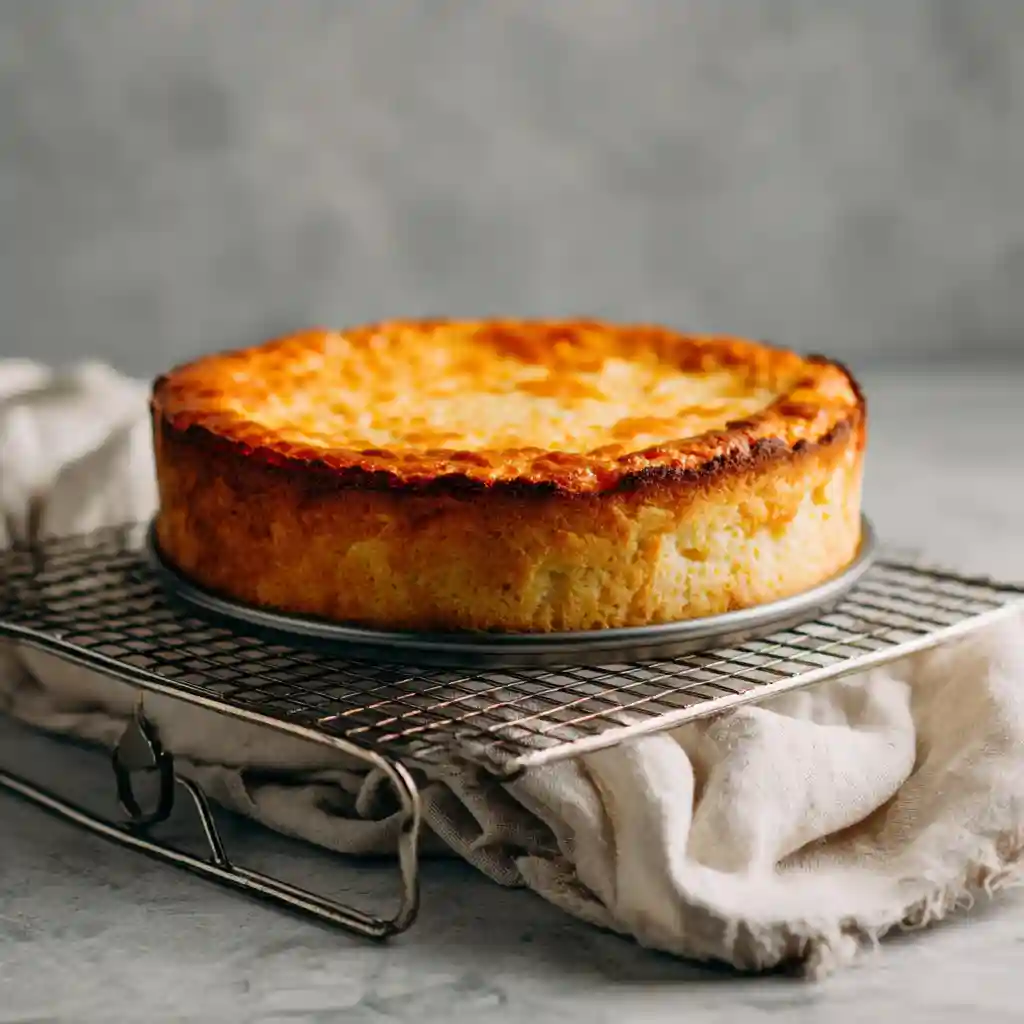
Flavor & Function in Baking
Cottage cheese does more than lighten up desserts it actually improves the structure of your cheesecake. The high protein content helps the cake set without needing a lot of eggs or starches. That’s why cottage cheese cake holds its shape well without being rubbery.
The flavor? Surprisingly neutral. It doesn’t taste “cheesy” like cream cheese. Instead, it acts like a blank canvas that works beautifully with vanilla, lemon zest, or berries. You can even go savory if you’re adventurous.
For bakers watching their macros or just curious about trying something different, cottage cheese cake is a smart swap. It lets you enjoy cheesecake more often with less guilt and no compromise on taste.
How to Make the Perfect Cottage Cheese Cake Step-by-Step
Ingredients You’ll Need for Cottage Cheese Cake
Before you start, make sure your ingredients are at room temperature this helps everything blend smoothly. Here’s what you’ll need:
- 2 cups full-fat cottage cheese
- 3 large eggs
- ½ cup Greek yogurt or sour cream
- ½ cup maple syrup or honey
- 1 teaspoon vanilla extract
- 1 tablespoon lemon juice
- 2 tablespoons cornstarch or flour (for structure)
- Optional: zest of one lemon or orange
- Crust: 1½ cups graham cracker crumbs + 5 tablespoons melted butter
For a lighter crust, swap graham crackers with almond flour or oats. And if you’re into no-bake treats, this crust pairs perfectly with No-Bake Protein Balls too!
Make sure you’re using a high-speed blender or food processor to blend the cottage cheese until it’s smooth. That’s the key to a creamy cottage cheese cake base with no lumps or curd texture.
If you’re prepping for a brunch or family gathering, try serving this cake alongside something cozy and spiced, like Carrot Cake Cinnamon Rolls.
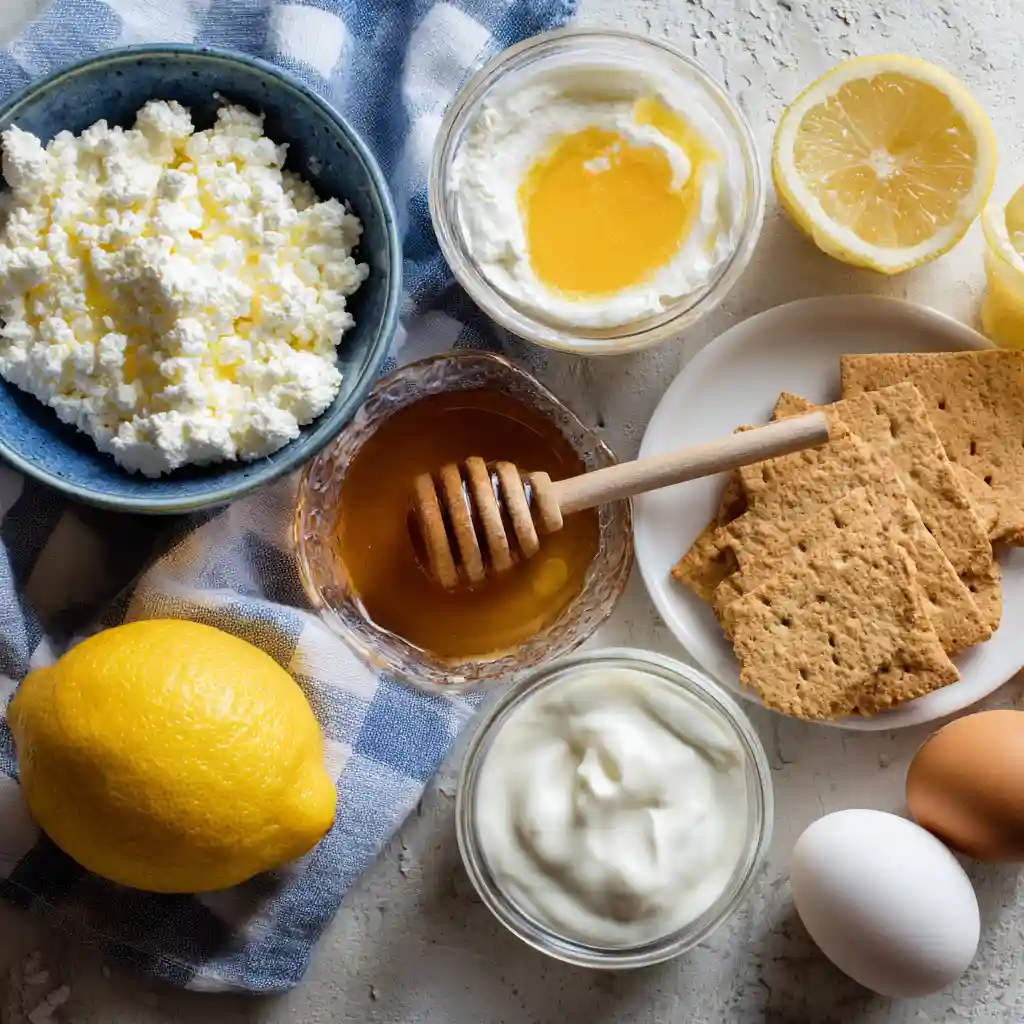
Blending, Baking, and Cooling It Just Right
- Preheat your oven to 325°F (160°C). Lightly grease a 9-inch springform pan and press the crust mixture evenly into the bottom. Bake the crust for 10 minutes and let it cool.
- Blend the filling: Add the cottage cheese, eggs, yogurt, sweetener, vanilla, lemon juice, and starch to your blender. Blend on high until very smooth, about 60 seconds.
- Pour the mixture over the pre-baked crust. Tap the pan on the counter to release air bubbles.
- Bake for 40–45 minutes, or until the center is just set. It should jiggle slightly but not be wet.
- Cool at room temperature for 1 hour, then refrigerate for at least 4 hours (overnight is best) before slicing.
Once chilled, your cottage cheese cake will be firm, creamy, and ready to top with fruit, drizzle with chocolate, or serve as-is.
How to Serve Cottage Cheese Cake + Why It’s So Popular Now
Simple Ways to Top and Serve Your Cottage Cheese Cake
Once your cottage cheese cake has chilled and set, the fun part begins: serving it up in a way that feels fresh, special, and totally satisfying.
This cake is delicious on its own, but here are a few simple topping ideas that elevate it to something memorable:
- Fresh berries: Blueberries, raspberries, or strawberries add color and brightness.
- Fruit compote: Simmer chopped fruit with a little lemon juice and maple syrup until thick.
- Citrus zest: Grated lemon or orange zest brings a burst of freshness.
- Dark chocolate drizzle: Melt dark chocolate and drizzle it over the chilled cake for contrast.
- Whipped cream or yogurt: A spoonful on the side adds creaminess.
The best part about cottage cheese cake is that it’s flexible. Want a hint of spice? Add cinnamon to the crust. Prefer a protein-boosted breakfast slice? Go crustless and pair it with coffee. However you slice it, it works beautifully.
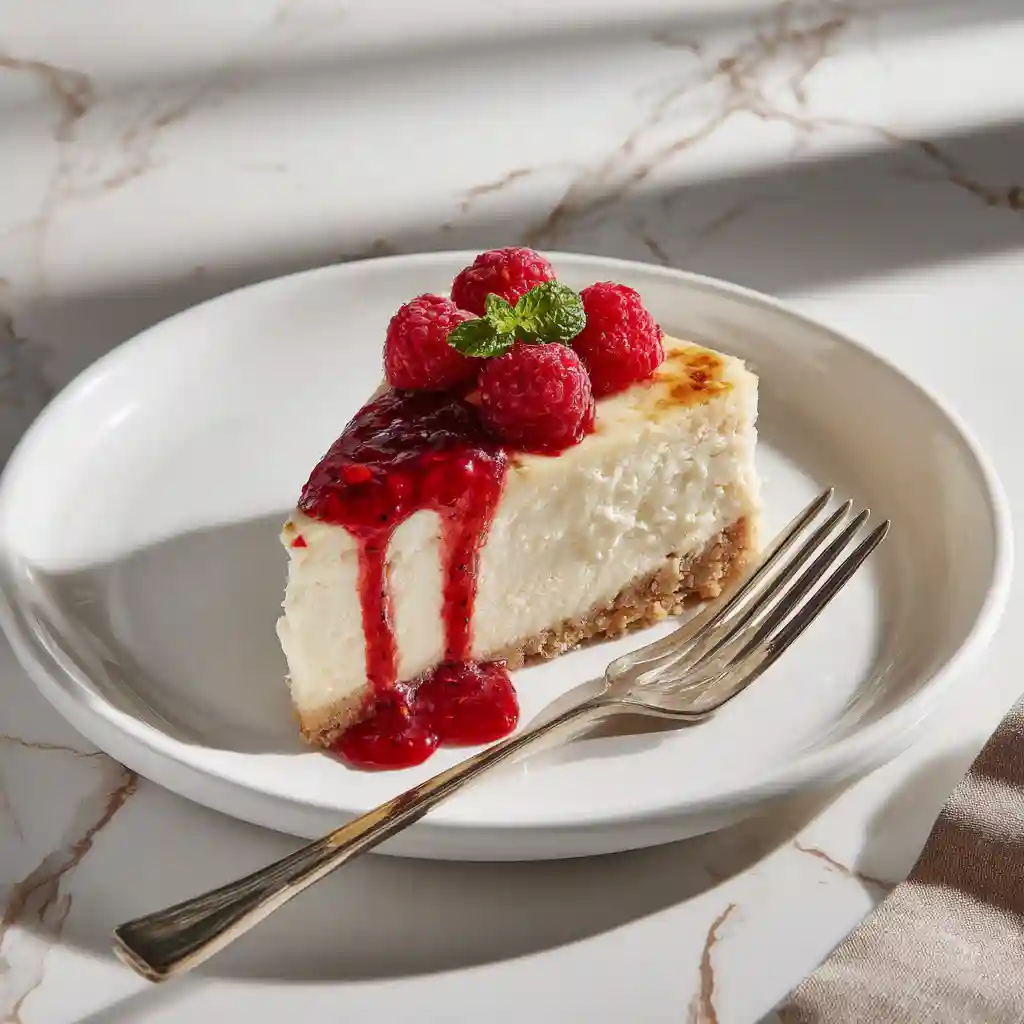
Why Everyone’s Talking About Cottage Cheese Right Now
Cottage cheese has officially made a comeback and not just in 1980s diet cookbooks. Social media, fitness trends, and high-protein diets have given it new life. From protein ice cream to savory snack bowls, it’s become a surprising star in modern recipes.
So why the obsession?
- High protein, low carb: Great for people focused on macros.
- Mild flavor: It works in sweet or savory dishes.
- Creamy when blended: Perfect for sauces, dips, and yes cakes.
- Budget-friendly: More affordable than Greek yogurt or cream cheese.
And unlike other trendy ingredients, cottage cheese cake actually delivers. It tastes good. It’s satisfying. And it gives home bakers a way to make a classic dessert feel new again without complicated techniques or specialty tools.
Conclusion
I never imagined that something as humble as cottage cheese could lead to one of my all-time favorite desserts. But here we are with a light, creamy, and incredibly satisfying cottage cheese cake that holds its own against the richest cheesecakes out there.
This recipe has become a staple in my kitchen, especially when I want to serve something sweet without feeling weighed down. It’s simple enough for beginners and versatile enough for experienced bakers to riff on. Whether you’re baking for a dinner party, a family brunch, or just because it’s Wednesday, this cake brings comfort with every bite.
If you’ve never tried a cottage cheese cake before, consider this your invitation to shake up your dessert routine. Trust me once you do, you’ll wonder why you didn’t start sooner.
And for more recipes follow me in facebook.
Frequently Asked Questions About Cottage Cheese Cake
How does cottage cheese affect cheesecake?
Cottage cheese changes the texture and nutrition of traditional cheesecake. When blended smooth, it mimics cream cheese while adding more protein and less fat. It creates a lighter, fluffier consistency in cottage cheese cake and still holds up beautifully when baked. You’ll notice a slightly airier bite without sacrificing creaminess.
How to make cheesecake using cottage cheese?
To make cheesecake with cottage cheese, blend full-fat cottage cheese until it’s completely smooth. Mix it with eggs, a natural sweetener like honey or maple syrup, and a little flour or cornstarch. Pour the filling into a crust and bake at a low temperature until set. This base is the foundation of any good cottage cheese cake creamy, balanced, and surprisingly easy.
What does cottage cheese do in baking?
In baking, cottage cheese adds moisture, protein, and a creamy texture when blended. It helps structure the batter without needing lots of added fat. In recipes like cottage cheese cake, it creates a soft, melt-in-your-mouth result that’s both wholesome and rich.
Why is everyone talking about cottage cheese?
Cottage cheese is trending because it’s high in protein, versatile, and easily fits into both sweet and savory recipes. From pancakes to ice cream, and of course, cottage cheese cake, it’s being rediscovered as a modern ingredient that’s both nutritious and adaptable perfect for today’s health-conscious cooks.

Cottage Cheese Cake: 5 Reasons This Creamy Dessert Wins Hearts
- Total Time: 1 hour
- Yield: 1 cheesecake (8 servings) 1x
Description
This creamy, protein-rich cottage cheese cake is a lighter twist on classic cheesecake. Made with blended cottage cheese, it’s smooth, satisfying, and perfect for a wholesome dessert or brunch.
Ingredients
- 2 cups full-fat cottage cheese
- 3 large eggs
- ½ cup Greek yogurt or sour cream
- ½ cup maple syrup or honey
- 1 tsp vanilla extract
- 1 tbsp lemon juice
- 2 tbsp cornstarch or flour
- Zest of 1 lemon or orange (optional)
- Crust: 1½ cups graham cracker crumbs + 5 tbsp melted butter
Instructions
1. Preheat oven to 325°F (160°C). Grease a 9-inch springform pan.
2. Mix graham cracker crumbs and melted butter. Press into pan base and bake for 10 minutes. Let cool.
3. In a blender, combine cottage cheese, eggs, yogurt, sweetener, vanilla, lemon juice, zest, and cornstarch. Blend until completely smooth.
4. Pour filling over cooled crust. Tap pan gently to release air bubbles.
5. Bake for 40–45 minutes, or until the center is set but still slightly jiggly.
6. Cool at room temperature for 1 hour, then chill in the refrigerator for at least 4 hours (overnight is best).
7. Slice and serve with fresh berries or chocolate drizzle.
Notes
Make sure to use a high-powered blender to ensure a smooth texture.
You can swap the crust for almond flour or oats if desired.
For extra flavor, add cinnamon or nutmeg to the crust mixture.
- Prep Time: 15 mins
- Cook Time: 45 mins
- Category: Dessert
- Method: Baking
- Cuisine: American
Nutrition
- Serving Size: 1 slice
- Calories: 210
- Sugar: 12g
- Sodium: 160mg
- Fat: 9g
- Saturated Fat: 4g
- Unsaturated Fat: 4g
- Trans Fat: 0g
- Carbohydrates: 18g
- Fiber: 0g
- Protein: 12g
- Cholesterol: 85mg

